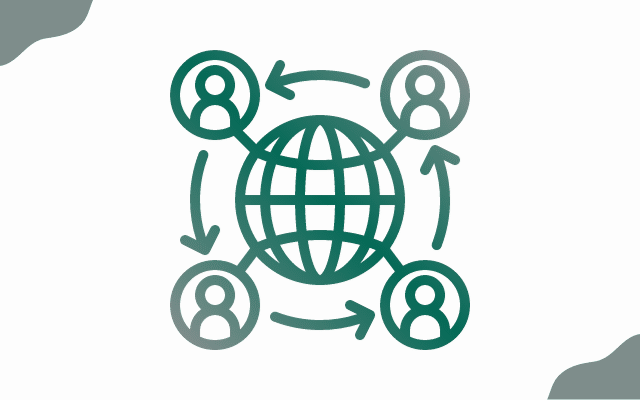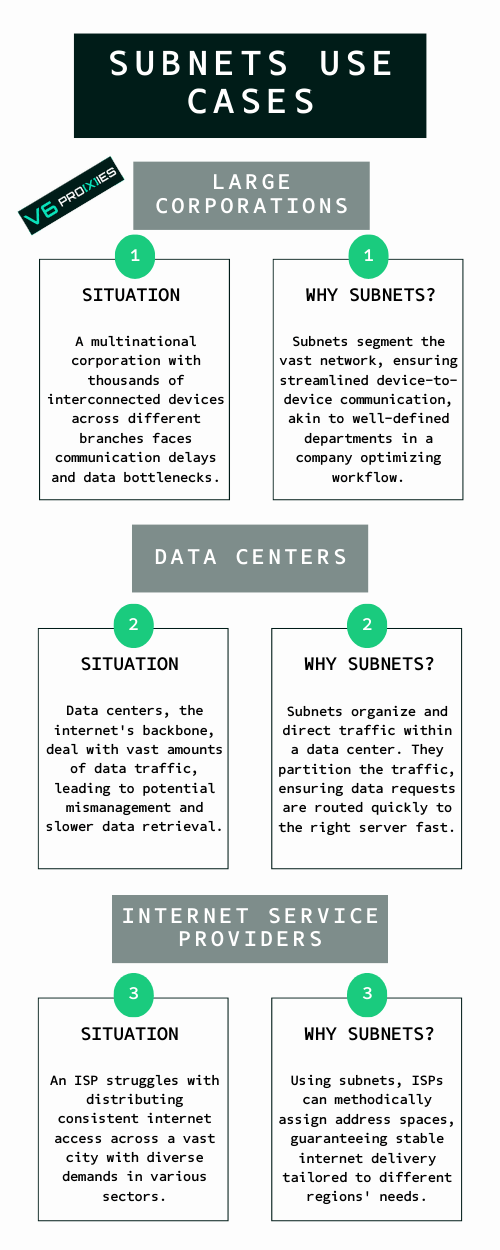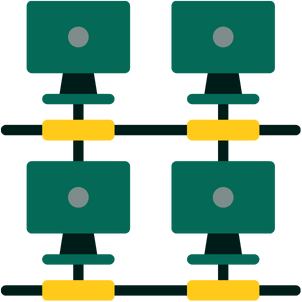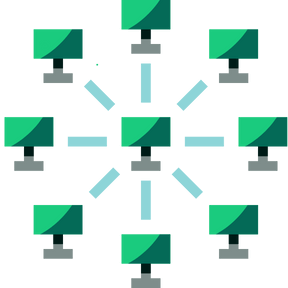To understand subnets in networking and the world of proxies, Let’s imagine a big city with loads of buildings, streets, and traffic.
Now, think of the whole city as the internet; all the buildings as different websites and online services, and the traffic as the flow of data. You live in one building, let’s call it your ‘IP address’.
Now, if the city was unplanned and chaotic, it would be impossible for the postman, or in our case- data, to find your building efficiently. That’s where the idea of subnets comes in- they are like the specialised neighbourhoods in this city.
In today’s proxy glossary episode, we will understand what subnets are, and why they are important to understand if you are using proxy services.
Table of Contents
What is a subnet?
Simply put, an IP subnet, or subnetwork is a portion of a larger network. Devices within it, recognized by their IP addresses, group together to communicate quickly and effectively due to optimized traffic routing.
So, subnets’ main purpose = structuring and segmenting of larger networks, and this leads us to the exciting part: the relationship between subnets and proxies.
Subnets Real Use Cases
Subnets aren’t mere technical terms; they’re instrumental in various operational scenarios. Here are 3 examples of main use cases of subnets:
Subnets and Proxies
Now, where do proxies fit in this? Let’s go back to our city analogy. proxies play a significant role in determining how you present yourself in the digital realm.
Proxies serve as intermediaries, rerouting your traffic, making it appear as if it stems from an alternative IP address.
This proxy ip address might reside within your existing subnet or an entirely different one.
Why should you care as a proxy user?
Now, diving into the practical implications: Many websites closely monitor access patterns. Excessive access from a single IP can lead to CAPTCHA interventions or even result in an outright IP ban.
But the challenges extend further.
Sophisticated platforms may block an entire range of IPs if they detect suspicious activity stemming from a common subnet.
This is especially important when considering certain proxy providers that primarily source their IP addresses from data centers, implying that their proxies often share the same subnet.
Engaging in automated data scraping or other high-frequency activities via such a proxy could jeopardize not just one IP, but an entire cluster. And if another user’s actions on the same subnet draw scrutiny, it might render your proxies useless.
The key takeaway? The diversity of proxy subnets isn’t just a technical specification; it’s pivotal for uninterrupted and efficient operations.
Steer Clear of Subnet-related bans and errors
When you use proxies for online shopping, data extraction, sneaker copping, or social media management, relying on a singular subnet can be problematic. You still can avoid the trouble, and here is how:
- Buy proxy IPs from a mix of subnets and ask your proxy provider to give you that.
- Make sure your proxies are geographically distributed to make it less likely for activities to trigger regional or subnet-based bans.
- Regularly rotate your proxies and switch between different proxy IP addresses at set intervals to avoid bans.
- Use residential IPs to get a naturally wide proxy ip pool from real users all over the world.
The Architecture of a Subnet
A subnet, or subnetwork, is a strategically designed segment within a larger network, primarily used to streamline communication and manage resources. But what makes up its architecture?
Formation of a Subnet
At its core, creating a subnet involves partitioning the broader IP address space of a network. This division results in multiple smaller, interconnected networks that can operate independently, while still being part of the main network.
Key Components Of A Subnet
1. IP Address Range
Each subnet possesses a unique set of IP addresses, ensuring no overlaps with other subnets within the same network.
2. Subnet Mask
It’s a binary pattern that dictates which portion of an IP address relates to the network and the specific host.
3. Broadcast Address
This specific address within the subnet allows for the transmission of data to all devices in that subnet.
4. Gateway
Typically, the first IP address in the subnet serves as an access point or bridge to forward data outside the subnet.
Pathways for subnet Interaction with the Larger Networks
While subnets can operate somewhat autonomously, they remain interconnected components of the larger network.
This relationship means that while data within a subnet often stays in that subnet for efficiency, communication to external devices or subnets gets routed through specified pathways, maintaining the integrity and speed of the network.
Final Thoughts
Understanding subnets and their effect on proxy cost and success is crucial for successful online operations. As a trusted proxy provider, V6proxies offers tailored solutions that navigate subnets complexities and put your mind at ease. Explore our tailored services and plans today!
Read more about :
- Tags:






